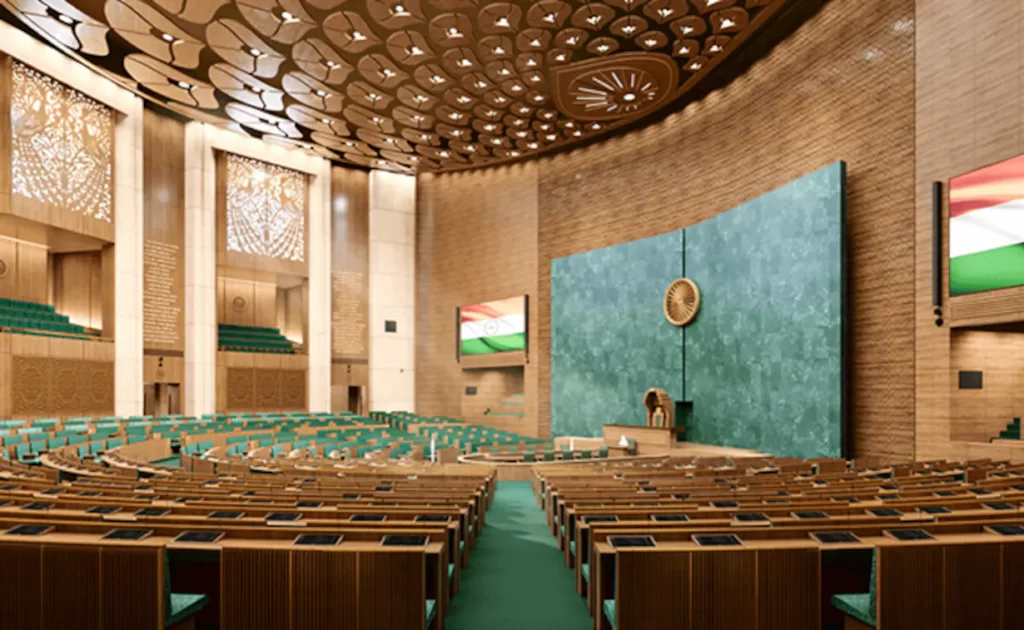In a significant stride towards embracing modernity and accommodating the evolving needs of a dynamic democracy, India has embarked on a historic endeavor with the construction of its new Parliament building. Designed to symbolize the nation’s progress, the new structure is set to become a prominent landmark in the heart of New Delhi, serving as a testament to India’s democratic ideals and commitment to effective governance. This article explores the significant features of India’s new Parliament building, highlighting its architectural marvel, enhanced functionality, and sustainability measures.

Architectural Significance of the New Parliament Building
The new Parliament building, envisioned by the renowned architect Bimal Patel, showcases a harmonious blend of contemporary design elements while paying homage to India’s rich cultural heritage. The structure reflects a balance between tradition and modernity, with a focus on creating an awe-inspiring edifice that stands the test of time.
The design features a circular shape, symbolizing unity and inclusivity, with an impressive dome crowning the building. The dome represents the grandeur of India’s democracy and serves as a beacon of progress. The intricate detailing and careful craftsmanship throughout the building exemplify the nation’s rich architectural legacy.
Enhanced Functionality of New Parliament Building
The new Parliament building boasts several state-of-the-art facilities and enhanced features to support the functioning of a robust democratic institution. The interior has been meticulously planned to accommodate the evolving needs of lawmakers, parliamentary staff, and visitors.
The building incorporates technologically advanced infrastructure, including modern audiovisual systems, digitized voting mechanisms, and advanced communication networks. These upgrades will facilitate seamless legislative proceedings, promote efficient decision-making, and improve transparency within the democratic process.
The spacious chambers and committee rooms provide ample space for parliamentary debates and deliberations. The design encourages collaboration and dialogue among lawmakers, fostering an environment conducive to effective governance. Additionally, the building incorporates modern amenities to ensure the comfort and convenience of parliamentarians and visitors alike.
Sustainability Measures
Recognizing the importance of sustainable practices, the new Parliament building incorporates various eco-friendly measures to reduce its environmental footprint. The design prioritizes energy efficiency, waste management, and conservation of resources.
Solar panels have been installed on the rooftop to harness renewable energy, reducing dependence on conventional power sources. The building also utilizes advanced water management systems, including rainwater harvesting and efficient water fixtures, to promote responsible water usage.
Furthermore, the construction materials have been carefully chosen to minimize environmental impact, employing sustainable alternatives where possible. The architects have also integrated green spaces and landscaping, creating a harmonious blend of nature and architecture.
Conclusion
India’s new Parliament building stands as a testament to the nation’s commitment to progress, democratic values, and sustainable development. With its awe-inspiring design, enhanced functionality, and eco-friendly features, the building is poised to become an iconic symbol of India’s modernity and democratic ethos.
As this architectural marvel nears completion, it signifies India’s determination to embrace the future while honoring its rich heritage. The new Parliament building will undoubtedly serve as a catalyst for effective governance, fostering dialogue, and facilitating democratic processes that shape the nation’s destiny for years to come.
